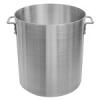Hello,
Quick question, before I contact FDA about this question.
So we are a juice bottling company. Basically bottling juice after it gets pasteurized. All juices have a pH of 4.4 and below.
Our 3 CCPs are the pasteurizer, in-line magnet, in-line strainer. so Biological and physical hazards.
We have a smoothie mix that uses coconut water (again final product pH is 4.4). now a new supplier for a coconut water has identified C. botulinum as a hazard in their HACCP plan. So then obviously we have to include into ours. We already have Salmonella in it, (CCP is Pasteurizer HTST). so knowing our product and process, C.botulinum will not even survive in it because our pH is under 4.6 (nature of our product will always be that pH since every single raw material we have have a pH of under 4.6).
Question and argument with others is, will pH be a CCP in this case? that we will have to add it as a 4th CCP in this product that uses coconut water?
My argument is that the inherited characteristic of this product doesnt even have a pH of above 4.6. so either way it wont be over it in this process. Unlike HTST, magnet or strainer, that we add to the process to eliminate the hazards.
Like to hear what everyone thinks about this!
















